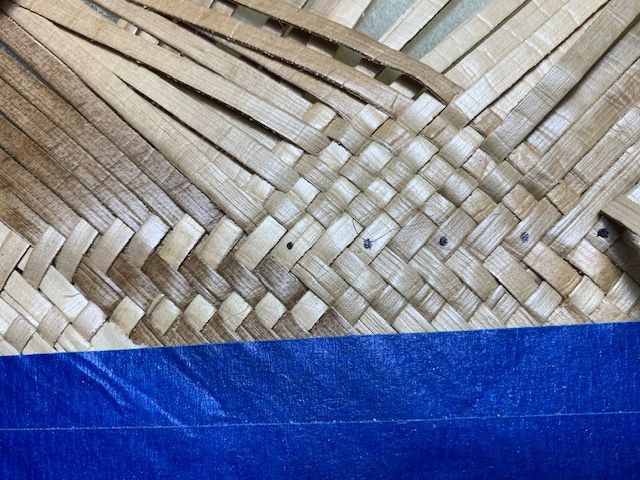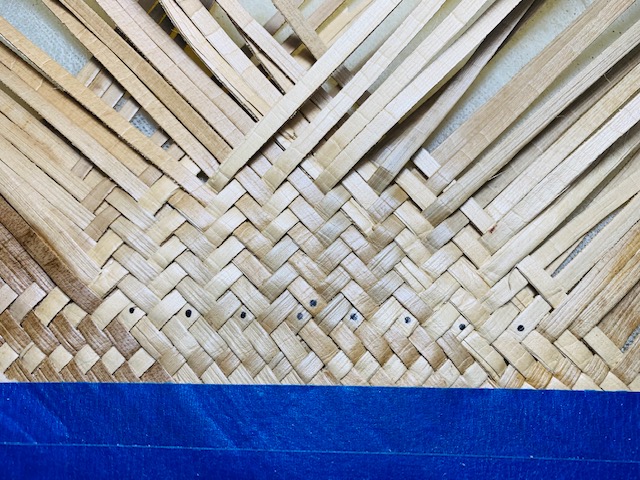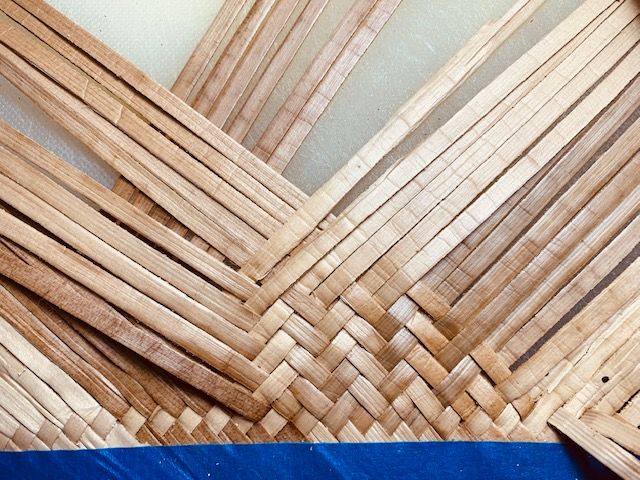Introduction
We have earlier talked about two different types of weaving/plaiting textures: maka moena ( check weave ) and maka ʻoʻeno ( two ply twill weave ). In weaving one style of hat, we transition between maka moena and maka ʻoʻeno when going from the piko to the pā. This is shown several times in Jim Skibbyʻs book , chapters three and five. In his book, Jim then continues all the way to the brim with maka ʻoʻeno weave.
But there are times when for a variety of reasons we would want to transition back to maka moena or go from one type of maka ʻoʻeno to another. Itʻs also important to know that there are two forms of maka ʻoʻeno: the horizontal and the vertical. So we also need to be able to go from the horizontal to the vertical and vice versa when weaving diagonally. The horizontal twill seems to be the most common in my limited experience.
What follows is a listing of the most common such transitions with each incidence linking to step-by-step illustrated pages. Weʻll also include a page on making “love knots” or pinwheels as a pattern.
Weaving Texture Changes Listing
1. Maka moena ( check ) to maka ʻoʻeno ( horizontal twill ) This is illustrated nicely in Jim Skibbyʻs book, chapter three. It is highly recommended that the reader practice this weaving transition before going on to other transitions.
I have found Jimʻs lauhala weaving practice board to be extremely useful in practicing this transition as well as the ones which follow. I will repeat the first few steps from Jimʻs book so that the reader will have a sense of my manner of presentation for all the texture changes below.
(picture)
2. Maka ʻoʻeno ( horizontal twill ) to maka moena ( check ) I often see hat brims which have been mostly woven with maka ʻoʻeno using maka moena as a border to finish the brim.

3. Maka ʻoʻeno ( horizontal ) to maka ʻoʻeno ( vertical ) Going back and forth between two types of twill produces a pattern called herringbone in English and ʻekeʻeke in Hawaiian.

4. Maka moena (check) to maka ʻoʻeno (vertical) Could be used after starting a pāpale pāʻole.

5. Maka ʻoʻeno ( vertical ) to maka moena ( check ) Could be used as a brim finish (hiʻi)
(picture)
6. Maka ʻoʻeno ( vertical ) to maka ʻoʻeno ( horizontal ) Reversing the herringbone back to horizontal twill looks very nice in broad stripes.
(picture)
7. Maka moena to Love Knots and back. This is often seen in the middle portion of the crown of a pāpale.
